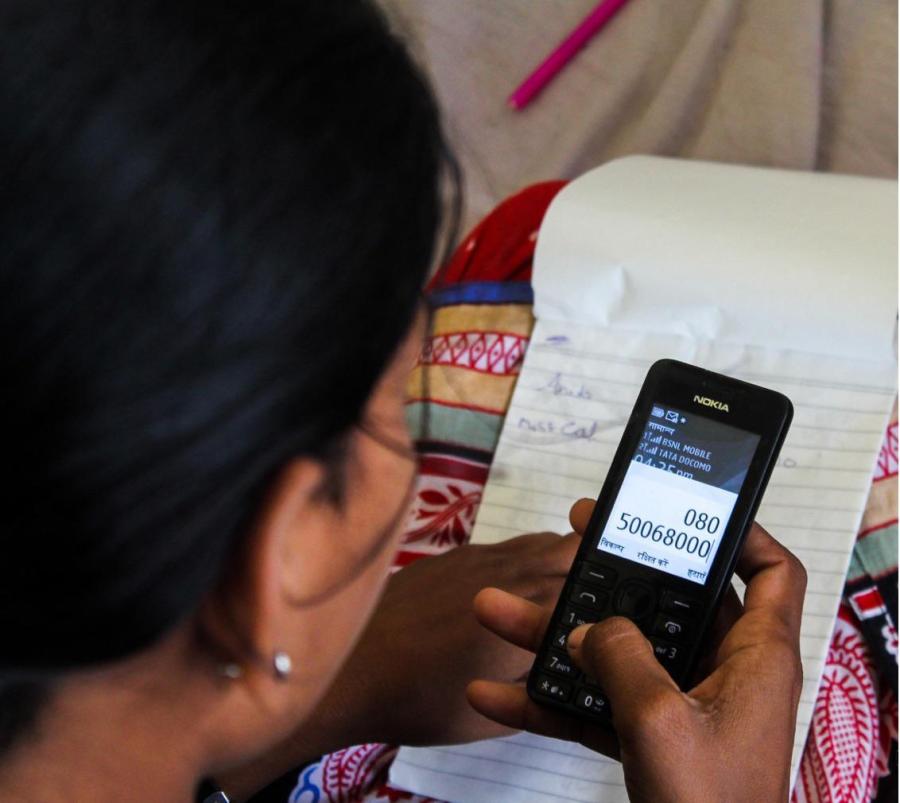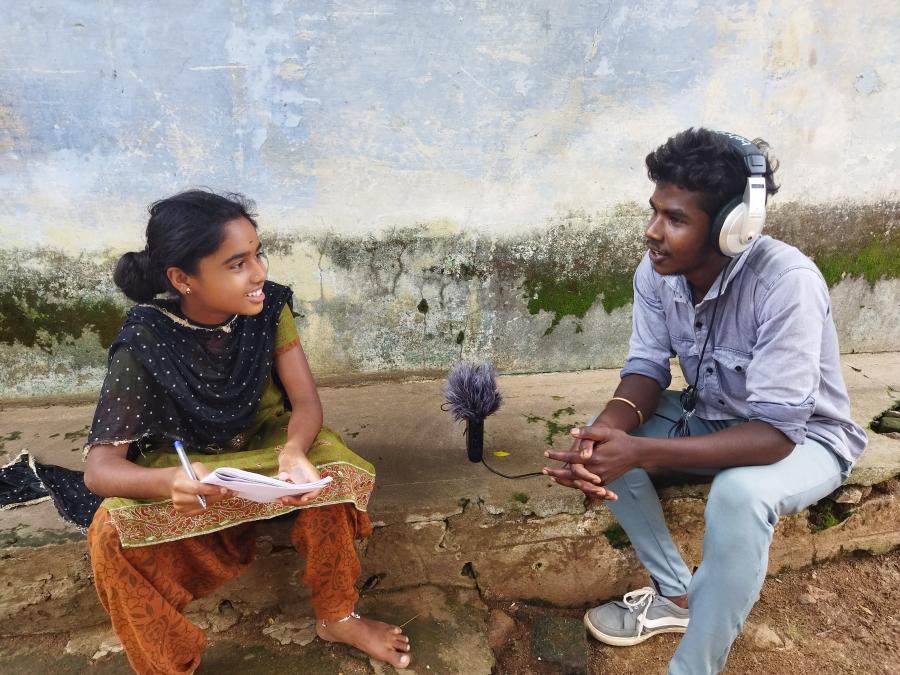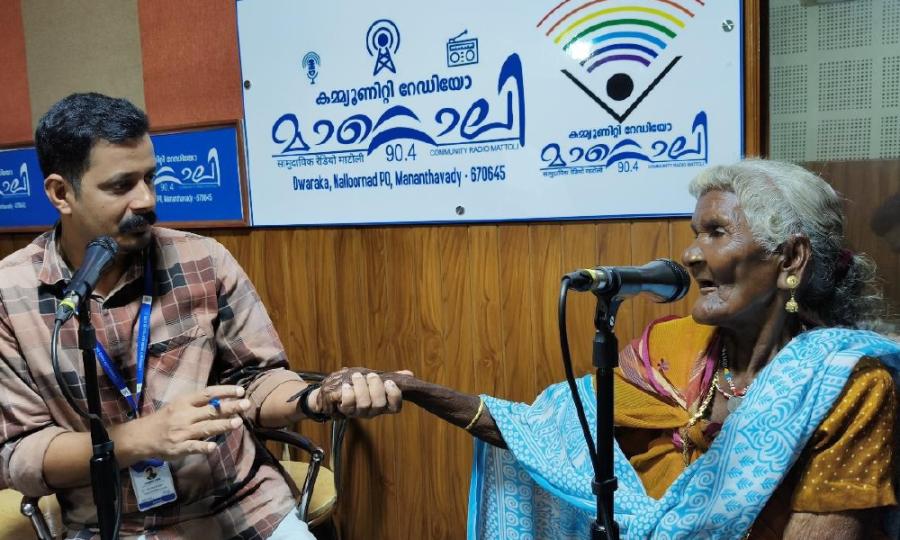Untouchable. Most of the world assumes that something - Mahatma Gandhi, modernization, progressive legislation - has solved this ancient Indian problem or reduced it to marginal significance. There has been some progress, but for each of the past several years, official figures on violent attacks against Untouchables have routinely exceeded 10,000 cases. Indian human rights workers report that most cases go unrecorded.
Violence is only the most conspicuous form of repression. The following description of Gujarat state, the scene of Mahatma Gandhi's early work, summarizes a situation that has become increasingly common in many parts of India.
In a climate of increasing mistrust and widening social distance between upper castes and Dalits [Untouchables], the latter are subjected to continual harassment, being refused work, denied milk and newspapers in the villages. In central Gujarat, in southern parts of Mehasana district and in areas around Ahmedabad, Dalit landless labourers are being replaced by Bhil tribals of Panchmahal. With growing awareness among the Dalits and the demand for statutory wages...the offensive against them has assumed serious proportions. According to official statistics, last year on average one Dalit was murdered in Gujarat every fortnight. Anyone familiar with rural Gujarat will realize this is a gross underestimate, as most murders of Dalits by high caste landlords are passed off as "accidents".
There are over 100 million Untouchables, more than the combined populations of France and the United Kingdom. Within India, however, they are a vulnerable minority; 15 % nationwide, with only a few areas in which the figure rises above 25 %. They are themselves divided by caste and by India's many languages, facts that make cooperative efforts on their own behalf difficult. Some have expressed their rebellion against the values of the dominant Hindu society by conversion to other religions - Sikh, Christian, Buddhist, Muslim - a move that rarely improves the way they are treated by the dominant society and often deprives them of what little protection the laws afford those who remain Hindus.
Untouchability as a religiously legitimated practice attached to certain hereditary Indian castes was well established by 100 B.C. Hindu religious texts rationalized untouchability with reference to karma and rebirth; one was born into an Untouchable caste because of the accumulation of heinous sins in previous births.
Theories of modern villagers are often more hazy, but belief in the innately and legitimately inferior status of Untouchables is no less strong; similar attitudes often surface among sophisticated urbanites. During recent riots against special access rules for Untouchables to professional schools, a leading sociologist wrote angrily of cases in which qualified Untouchable applicants to medical schools were told to go back to being sweepers.
The cultural denigration of Untouchables has long had important economic implications. Untouchability, like racism in the Western world, has served to rationalize and maintain a vast pool of cheap labor. It has also limited competition for those goods and positions that have defined power and prestige, whatever these have been over the years - land, the priesthood, modern white-collar professions. In protesting their status. Untouchables challenge the high degree of self-interest and deeply ingrained social beliefs that permeate Hindu society. Increasingly, the Untouchables have insisted on rising above this institution.
A number of factors produced this challenge. Colonialism brought with it a limited exposure to more egalitarian values. Pre-Independence maneuvers between the British and a variety of Indian groups sometimes led to competitive efforts to woo Untouchable allegiance in ways that further encouraged Untouchables to redefine their perceptions of self and society. Mahatma Gandhi's reform movement, which introduced the term Harijan (children of God), is the best known, but autonomous self-respect movements that developed within the Untouchable communities may well have had a more lasting impact. Certainly the change of values among Untouchables has far outrun change in the dominant society.
One Untouchable leader, the late Dr. B.R. Ambedkar, was also able to use the British/nationalist conflict to introduce policies that improved Untouchable access to education and government jobs and provided for constitutionally guaranteed proportional legislative representation. The results have fallen far short of Ambedkar's dreams, but political parties are obliged to pay competitive lip service to Untouchable interests, and a new generation of Untouchable youth is now sufficiently well-educated to be bitterly aware of the glaring gap between promise and performance. It is this generation that has introduced a new term for Untouchables - Dalits (the oppressed) - and a protest movement that often consciously echoes the themes and symbolism of Black America's revolt.
Basic structural changes in the Indian economy such as the shift to cash and contract have not lessened the economic dependency of the Untouchables, but they have helped to erode the cultural values that once supported exploitative relationships.
Problems for Untouchables are most severe in rural villages which are home to 90 % of the Untouchable population. Geographic dispersion makes them a vulnerable minority in most villages. The stigma of Untouchability makes alliances with others difficult even when economic issues would seem to link them to others. Landlords who use violence against demands for improved wages frequently single out Untouchables in their attacks, frightening non-Untouchable laborers.
The resources available to Untouchables who seek change are severely limited. Only 20% of rural Untouchable males are literate, compared to 34% of other villagers. Nationwide, 52 % of all "Scheduled Caste" (Untouchable) workers are landless agricultural laborers, compared to 26% of all workers from other castes. 1981 figures are not yet available but may show further deterioration. Although wages of agricultural laborers rose by 127% between 1965 and 1975, inflation for items purchased by villagers rose an average of 157%. Not surprisingly, the latest official Rural Labour Enquiry showed 71% of all Untouchable agricultural laborers were in debt, most to village moneylenders, shopkeepers, and landlords [Ministry of Labour, 1978].
Theoretically, law is on the side of the Untouchable villager. In practice, the village Untouchable who seeks to enforce the law is asking for trouble. Untouchables cannot be sure of support from a police force and a bureaucracy that are still strongly influenced by prevailing social values and the economic interests of local elites with powerful political connections. Law prohibits the touch-me-not-ism of untouchability, but a recent sample survey of 1155 villages by Harijan Sevak Sangh, a Gandhian service society, found Untouchables denied access to the village well in 613 of these and denied access to the village temple in 821. A police officer in the southern state of Tamil Nadu is quoted as saying of the anti-untouchability laws, "If we take this law seriously, half the population of Tamil Nadu will have to be arrested. In any case, the police have better things to do than go poking their nose into the private affairs of the people" [The Minority Rights Group]. The law also prohibits the semi-slavery of debt-bonded labor, but in 1976 the Gandhi Peace Foundation conducted a sample survey of 1000 villages in 10 states and estimated 2,600,000 bonded laborers in these 10 states alone. Of these, 62 % were Untouchables, with India's beleaguered tribals accounting for another 25 %. The survey team also found relatives and key supporters of legislators and senior bureaucrats among those employing bonded labor. The police are not quick to "poke their noses" into these cases either [Gandhi Peace Foundation, 1981]. The same problems affect a formidable array of redistributive laws - minimum wages, development grants for the landless and marginal farmers, land reforms.
By 1979 the reaction to village Untouchables' efforts to assert equality had been so violent - involving mass murders and arson - that one senior Indian social scientist urged a policy of planned emergency urbanization of Untouchables. The same argument has been made by Untouchable intellectuals as well.
Untouchables in urban India continue to have low social and economic status. A recent survey shows 65 % of these people who live on the street in Delhi are Untouchables.
Opportunities for mobility are by no means equal. Untouchables are not physically distinctive, but access to India's desperately scarce jobs, housing, and services requires manipulation of social relationships - to an extent Westerners find difficult to comprehend and higher caste Indians find easy to ignore. Reporting on a survey of employment patterns of urban college graduates, one study noted, "Graduates from the lower castes are more often unemployed...This holds true even when the low-caste graduate has the better academic qualifications". Special access programs to higher education and to jobs in the massive public-sector bureaucracies and industries are designed to counter such resistance but are hampered by hostile administrators.
There has been change, but it has had a recurrent price, whether it be three months of riots against the education and job programs for Untouchables in both urban and rural Gujarat in 1981, or a recent "minor" riot in Sholapur on the heels of an Untouchable literary conference.
An earlier incident in Agra, the city of the Taj Mahal, illustrates the complexity of the urban situation. Here Untouchables have some limited economic independence because their "polluting" leather craft is the basis for small businesses. Many have also asserted cultural independence through conversion to Buddhism. An annual parade in honor of the late Untouchable leader, Dr. Ambedkar, consciously symbolizes all that Untouchables should not be according to prevailing standards - proud, assertive, non-Hindu, and wealthy enough to carry out a parade that rivals higher caste displays. The parade is resented by the higher caste population, and in 1978 conflict triggered a police riot. The police went on a rampage in Untouchable residential areas, killing nine, seriously injuring more than 100, burning homes, and leaving the walls of an Untouchable Buddhist shrine riddled with bullet holes. As yet, no police have been brought to trial.
The situation is grim. A number of human and civil rights groups have developed in India in the past few years, and some of these now supplement the efforts of grassroots Untouchable organizations. Small groups of Untouchable immigrants to Britain and North America have added their own increasingly desperate calls for action. All are painfully aware of their limitations in the face of violence that has become routine and governments that repeat a maddening refrain - "There is no crisis, and we have it firmly under control."
Article copyright Cultural Survival, Inc.



